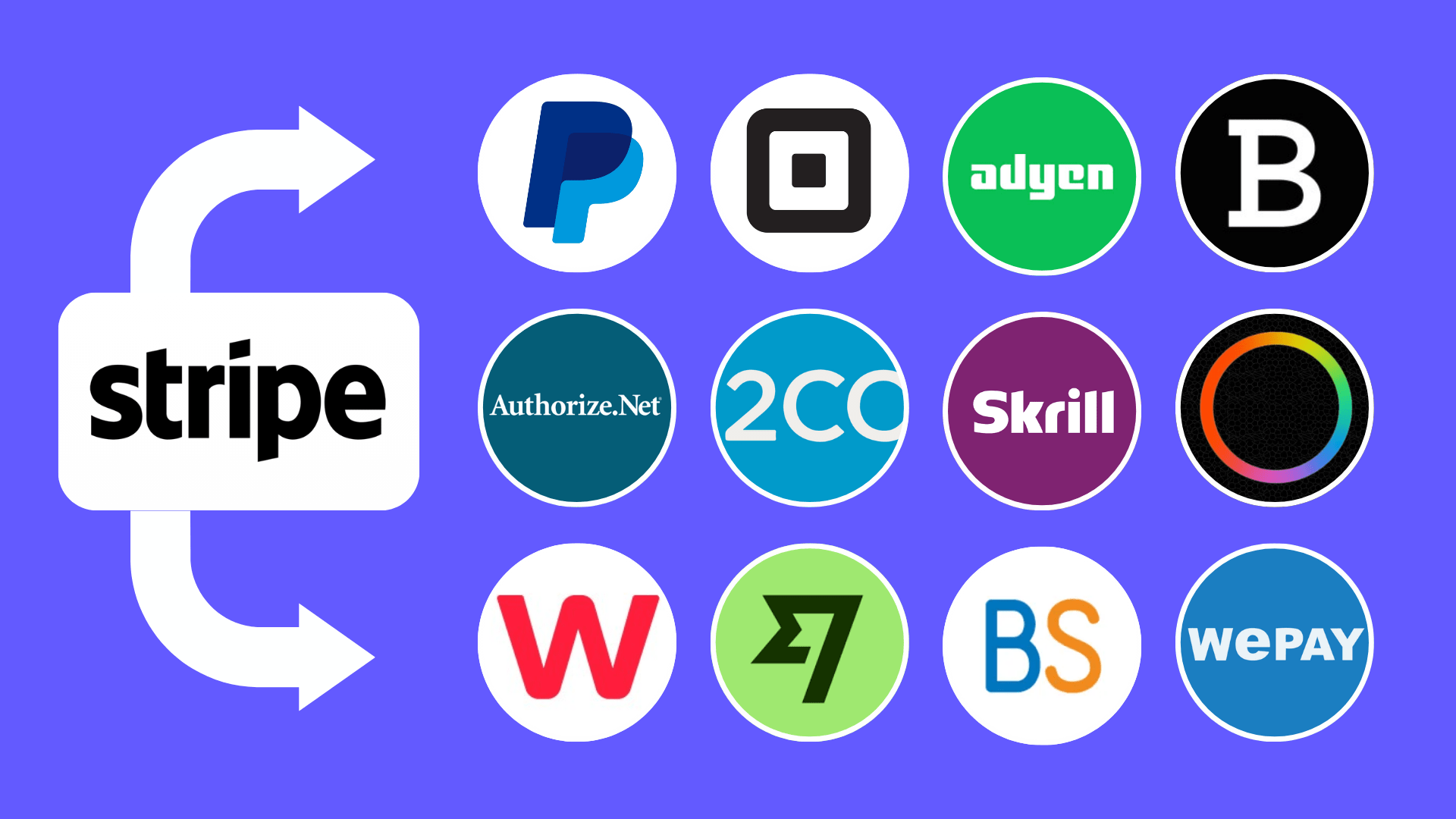Choosing between a brand and its alternative can be tough. Both have their pros and cons.
Comparisons like “Brand vs Alternative” help you make informed choices. They break down the features, benefits, and costs, letting you see which option suits your needs best. This blog will explore the key differences, giving you the knowledge to decide wisely.
Ready to dive in and find out which is better for you? Let’s get started!

Brand Loyalty
Brand loyalty is a consumer’s preference for a particular brand. This preference stems from positive experiences and satisfaction with the brand’s products or services. At brandVSalternate.com, we explore how this loyalty can affect consumer choices between established brands and their alternatives. Let’s dive into the elements that build brand loyalty.
Emotional Connection
Building an emotional connection is key to brand loyalty. When customers feel emotionally attached to a brand, they are more likely to stick with it. This connection can stem from various factors:
- Personal Experiences: Positive interactions with the brand, whether through customer service or product satisfaction.
- Values Alignment: Shared values between the brand and the consumer, such as sustainability or social responsibility.
- Community Engagement: Involvement in brand-related communities or events.
Brands like Nike and Apple excel in creating emotional bonds. They use storytelling and brand narratives to connect with their audience. Customers don’t just buy products; they buy into a lifestyle or a vision. At brandvsalternate.com, we believe that understanding these emotional triggers can help brands create deeper connections with their audience.
Trust Factors
Trust is another crucial element of brand loyalty. Without trust, consumers are less likely to remain loyal. Several factors contribute to building this trust:
- Consistency: Offering consistent quality and service over time.
- Transparency: Being open about business practices, sourcing, and pricing.
- Reliability: Ensuring products and services meet expectations reliably.
Trust can be built through various means, including:
| Factor | Description |
|---|---|
| Customer Reviews | Positive reviews and testimonials build credibility. |
| Certifications | Industry certifications or awards can enhance trust. |
| Customer Service | Responsive and helpful customer service reinforces trust. |
Brands that prioritize these trust factors are more likely to retain their customers. At brandvsalternate.com, we emphasize the importance of trust in fostering long-term brand loyalty.

Credit: medium.com
Alternative Choices
Brandvsalternative is a concept that explores the various options available in the market beyond the well-known brands. Understanding these alternatives can help consumers make informed choices. Here, we will delve into alternative choices, focusing on emerging brands and niche markets.
Emerging Brands
In the realm of alternative choices, emerging brands play a crucial role. These brands often bring fresh ideas and innovations to the table. They challenge the status quo and offer unique products that stand out. Choosing an emerging brand can have many benefits:
- Innovation: Emerging brands often introduce innovative products and solutions.
- Personal Touch: They tend to offer personalized customer service.
- Community Focus: Many emerging brands are community-driven and support local economies.
Here is a comparison table highlighting some key differences between emerging brands and established brands:
| Aspect | Emerging Brands | Established Brands |
|---|---|---|
| Innovation | High | Moderate |
| Customer Service | Personalized | Standardized |
| Community Impact | Local Focus | Global Focus |
Choosing an emerging brand can be a way to support innovation and local businesses. For those exploring brandvsalternative options, emerging brands provide a fresh perspective and often cater to niche needs.
Niche Markets
Niche markets are another vital aspect of alternative choices. These markets cater to specific needs and preferences that mainstream brands may overlook. Niche markets can be found in various sectors:
- Organic Foods: Catering to health-conscious consumers.
- Eco-Friendly Products: For those who prioritize sustainability.
- Handmade Goods: Offering unique, artisanal products.
Here are some reasons why niche markets are important:
- Specialization: Niche markets focus on specific needs.
- Quality: Often, niche products are of higher quality.
- Unique Offerings: They provide unique and exclusive products.
Exploring niche markets can lead to discovering products that align better with personal values and preferences. For consumers looking at brandvsalternative options, niche markets offer a tailored shopping experience that can be more satisfying and fulfilling.

Credit: brandvsalternate.com
Price Comparison
When deciding between Brandvsalternative products, the price comparison plays a crucial role. Understanding the differences in cost and value helps make an informed choice. This guide breaks down the cost analysis and value perception of these options.
Cost Analysis
Examining the prices of Brandvsalternative products reveals some interesting contrasts. Brand products often come with a higher price tag due to their established reputation and marketing costs. In contrast, alternative products tend to be more budget-friendly.
Consider the following example:
| Product | Brand Price | Alternative Price |
|---|---|---|
| Product A | $50 | $30 |
| Product B | $100 | $70 |
The table shows that alternative products can be significantly cheaper. This price difference can be due to various factors such as:
- Lower marketing and branding expenses
- Use of different materials
- Production in countries with lower labor costs
It’s clear that the initial cost of alternative products is often lower. For budget-conscious consumers, this can be a key factor in the decision-making process.
Value Perception
Price is not the only consideration. Value perception also plays a major role. Consumers often associate higher prices with better quality. This perception can influence their buying decisions.
For instance, brand products often come with:
- Extended warranties
- Better customer service
- Higher quality assurance
These factors can justify the higher price for many buyers. On the other hand, alternative products may offer similar benefits at a lower cost. This can make them appealing for those who prioritize value over brand recognition.
To illustrate, consider the following:
| Feature | Brand | Alternative |
|---|---|---|
| Warranty | 2 Years | 1 Year |
| Customer Support | 24/7 | Business Hours |
| Material Quality | Premium | Standard |
While brand products often excel in these areas, alternative products can still offer satisfactory performance. The choice between brand and alternative depends on individual priorities and budget constraints.
Quality Assessment
When comparing brand products and their alternatives, quality assessment plays a crucial role. Understanding the differences in quality helps consumers make informed decisions. Let’s dive into how brand standards and alternative innovations stack up in terms of quality.
Brand Standards
Brand products often come with established quality standards. These standards ensure consistency and reliability. Brands maintain their reputation by adhering to strict guidelines. Here are some key aspects of brand standards:
- Consistency: Brand products are known for their uniform quality. Each item meets the same criteria, ensuring a predictable experience.
- Materials: Brands often use high-quality materials. This enhances the durability and performance of their products.
- Testing: Rigorous testing is a hallmark of brand products. Brands invest in quality control to ensure their products meet industry standards.
- Warranty: Many brands offer warranties. This adds an extra layer of trust and reliability.
Brands also focus on customer feedback. They use this feedback to improve their products continually. Let’s take a look at a comparison table highlighting some key aspects of brand standards:
| Aspect | Brand Products |
|---|---|
| Consistency | High |
| Materials | Premium |
| Testing | Extensive |
| Warranty | Available |
Brands invest heavily in maintaining these standards. This investment often reflects in the product’s price. Consumers pay for the assurance of quality and reliability.
Alternative Innovations
Alternative products often bring innovation to the table. These innovations can sometimes match or even exceed brand standards. Here are some notable features of alternative innovations:
- Affordability: Alternatives are usually more affordable. They offer good value for money.
- Unique Features: Alternatives often introduce unique features. These features can enhance usability and functionality.
- Flexibility: Alternative products can be more flexible. They may cater to niche markets or specific needs.
- Customer Focus: Many alternative brands listen closely to customer needs. They adapt quickly to market demands.
Alternatives also focus on sustainability. Many use eco-friendly materials and practices. Here’s a comparison table highlighting key aspects of alternative innovations:
| Aspect | Alternative Products |
|---|---|
| Affordability | High |
| Unique Features | Varied |
| Flexibility | High |
| Customer Focus | Strong |
Alternative products provide a balance of quality and cost. They often surprise with innovative solutions. Consumers appreciate the options and diversity they bring.
Marketing Strategies
Marketing strategies play a crucial role in defining how a brand or its alternatives present themselves to the market. Understanding and utilizing effective strategies can help businesses reach their target audience more efficiently and create a lasting impact. This section will explore the differences in marketing strategies between well-established brands and alternative options.
Brand Messaging
Brand messaging is the core communication that represents a company’s identity and values. It is crafted to resonate with the target audience and convey the brand’s unique selling points. Key elements of brand messaging include:
- Tagline: A memorable phrase that encapsulates the brand’s essence.
- Value Proposition: Clear statements about the benefits the brand offers.
- Voice and Tone: Consistent language that reflects the brand’s personality.
For example, a luxury car brand might emphasize:
| Tagline | Value Proposition | Voice and Tone |
|---|---|---|
| Experience the Excellence | Unmatched performance and elegance | Confident and sophisticated |
This cohesive messaging helps build a strong brand identity that customers recognize and trust. Consistency across all marketing channels, including social media, advertising, and customer service, reinforces this identity.
Alternative Promotions
Alternative promotions are strategies used by smaller or less-known brands to compete with established names. These promotions often focus on creativity, cost-effectiveness, and direct engagement with potential customers. Some alternative promotional strategies include:
- Influencer Marketing: Collaborating with influencers to reach a wider audience.
- Content Marketing: Creating valuable content to attract and retain customers.
- Social Media Campaigns: Engaging with customers through interactive and shareable posts.
For instance, a new skincare brand might use:
| Strategy | Execution |
|---|---|
| Influencer Marketing | Partnering with beauty bloggers |
| Content Marketing | Publishing skincare tips and tutorials |
| Social Media Campaigns | Running hashtag challenges and giveaways |
These alternative promotions can help smaller brands gain visibility and build a loyal customer base. They offer a fresh approach that can differentiate them in a crowded marketplace.
Consumer Behavior
Understanding consumer behavior is crucial for any business, especially in the context of Brandvsalternative. Consumer behavior encompasses the decision-making processes, buying patterns, and factors influencing purchases. By examining these aspects, businesses can tailor their strategies to better meet consumer needs and preferences.
Buying Patterns
Buying patterns refer to the typical ways consumers purchase products. These patterns can reveal valuable insights into consumer preferences and tendencies. For Brandvsalternative, understanding these patterns is essential to cater to diverse consumer demands. Here are a few key buying patterns observed in the market:
- Impulse Buying: Consumers sometimes make spontaneous purchases without prior planning. These purchases are often driven by emotions or attractive promotions.
- Planned Purchases: Some consumers research and plan their purchases in advance. They compare brands and alternatives before making a decision.
- Seasonal Trends: Certain products see higher sales during specific seasons. For instance, winter clothing sees a spike in sales during the colder months.
- Loyalty Purchases: Brand loyalty plays a significant role. Consumers often stick to brands they trust and have had positive experiences with.
By analyzing these patterns, businesses can optimize their marketing strategies. For example, leveraging impulse buying through limited-time offers or promoting seasonal products effectively can boost sales. Understanding planned purchases can help in providing detailed product comparisons and reviews to assist consumer decisions.
Influence Of Reviews
Reviews play a pivotal role in shaping consumer decisions. Positive or negative feedback can significantly impact a brand’s reputation and sales. Here are some ways reviews influence consumer behavior:
- Trust Building: Positive reviews build trust among potential buyers. They provide social proof that the product or service is reliable.
- Decision Making: Consumers often rely on reviews to make informed decisions. Detailed reviews help them understand the product’s strengths and weaknesses.
- Comparing Alternatives: Reviews help in comparing different brands and alternatives. Consumers can weigh the pros and cons before making a purchase.
- Brand Perception: Consistent positive reviews enhance a brand’s image. Negative reviews, on the other hand, can deter potential buyers.
Here is a table summarizing the impact of reviews on consumer behavior:
| Aspect | Impact |
|---|---|
| Trust Building | Positive reviews increase trust, leading to higher sales. |
| Decision Making | Reviews provide detailed insights, aiding in informed decisions. |
| Comparing Alternatives | Reviews help consumers compare products before buying. |
| Brand Perception | Consistent reviews shape the overall brand image. |
In conclusion, businesses should encourage satisfied customers to leave positive reviews. Addressing negative reviews promptly can also help in maintaining a good brand image.
Sustainability Factors
Brandvsalternative focuses on making informed choices. One key aspect is sustainability factors. Understanding which brands are eco-friendly and which alternatives are sustainable helps make better decisions. This section explores these factors, making it easier to choose wisely.
Eco-friendly Brands
Eco-friendly brands prioritize the environment. They adopt practices that reduce their carbon footprint. Here are some characteristics of eco-friendly brands:
- Use of organic materials
- Minimal packaging
- Renewable energy sources
- Fair trade practices
These brands often have certifications. Examples include:
| Brand | Certification | Practices |
|---|---|---|
| Brand A | Organic Certified | Uses organic cotton |
| Brand B | Fair Trade | Supports fair wages |
Choosing eco-friendly brands helps reduce environmental impact. They often cost more but offer better quality and sustainability. Supporting these brands means supporting a healthier planet.
Sustainable Alternatives
Sustainable alternatives are products that offer eco-friendly options. They are often made from recycled or renewable materials. Some examples include:
- Bamboo toothbrushes
- Reusable bags
- Solar-powered gadgets
These alternatives help reduce waste. Here’s how they compare:
| Product | Traditional | Sustainable Alternative |
|---|---|---|
| Toothbrush | Plastic | Bamboo |
| Shopping Bag | Plastic | Reusable Cloth |
Sustainable alternatives are often more durable. They save money in the long run. Making small changes can have a big impact. Switching to sustainable alternatives is a step towards a greener future.

Future Trends
Understanding the future trends of Brandvsalternative is crucial for consumers and businesses. With constant changes in the market, knowing these trends can help you make informed decisions. This post explores the evolution of brands and the rise of alternatives.
Brand Evolution
The evolution of brands is a dynamic process. In recent years, brands have adapted to changing consumer preferences and technological advancements. Here are some key trends in brand evolution:
- Personalization: Brands now focus on creating personalized experiences for their customers. Customized products and services enhance customer loyalty.
- Digital Presence: A strong online presence is essential. Brands invest in SEO, social media, and e-commerce platforms to reach a wider audience.
- Sustainability: Eco-friendly practices are becoming a priority. Consumers prefer brands that are transparent about their environmental impact.
Moreover, brands are leveraging technology to improve customer engagement. The use of artificial intelligence (AI) and machine learning (ML) allows for better customer insights and personalized marketing strategies.
| Trend | Description |
|---|---|
| Personalization | Customized products and services for customer loyalty. |
| Digital Presence | Investment in SEO, social media, and e-commerce. |
| Sustainability | Eco-friendly practices and transparency. |
Brands on brandvsalternate.com are taking these trends seriously. They aim to stay relevant and competitive in a rapidly changing market.
Rise Of Alternatives
The rise of alternatives is reshaping consumer behavior. More people are considering alternative options to traditional brands. This shift is driven by several factors:
- Cost Efficiency: Alternatives often offer similar quality at a lower price.
- Unique Offerings: Alternatives provide niche products and services that mainstream brands may not offer.
- Consumer Trust: Smaller brands or alternatives often build strong customer relationships through authenticity and transparency.
Furthermore, the internet has made it easier for consumers to discover and access alternatives. Online reviews, social media, and comparison websites like brandvsalternate.com play a significant role in this discovery process.
Consider the following points:
- Alternative brands often use direct-to-consumer (DTC) models to reduce costs.
- They leverage user-generated content to build trust and engagement.
- Many alternatives are quick to adapt to market changes, offering innovative solutions.
The rise of alternatives reflects a shift towards a more diverse and competitive market. Consumers now have more choices, empowering them to find products and services that best meet their needs.
Both established brands and emerging alternatives are shaping the future. Staying informed about these trends can help you make better decisions.

Frequently Asked Questions
What Is Brandvsalternative?
Brandvsalternative compares brand-name products with their generic or alternative counterparts.
Why Consider Alternatives To Brand Products?
Alternatives often provide similar quality at a lower price, offering better value.
Are Alternatives As Effective As Brand Products?
Many alternatives match the effectiveness of brand products, but research each option.
How To Find Reliable Alternatives?
Check reviews, compare ingredients, and consult trusted sources for recommendations.
Conclusion
Choosing between brand and alternative options depends on your needs and budget. Both have their pros and cons. Brands often promise reliability and quality. Alternatives can offer savings and similar performance. Evaluate your specific situation. Look at reviews, compare prices, and consider your priorities.
Make an informed decision that suits your lifestyle. Remember, the best choice is the one that meets your needs without breaking the bank. Happy shopping!


